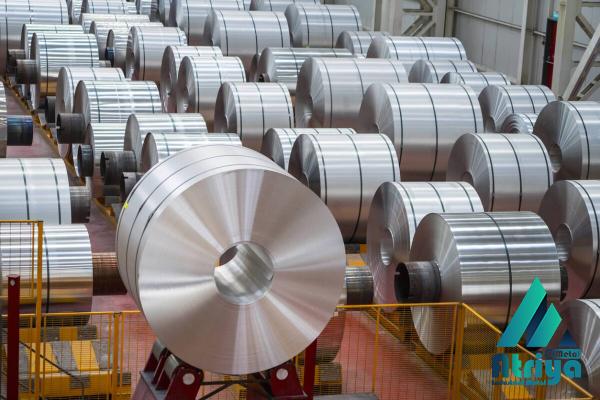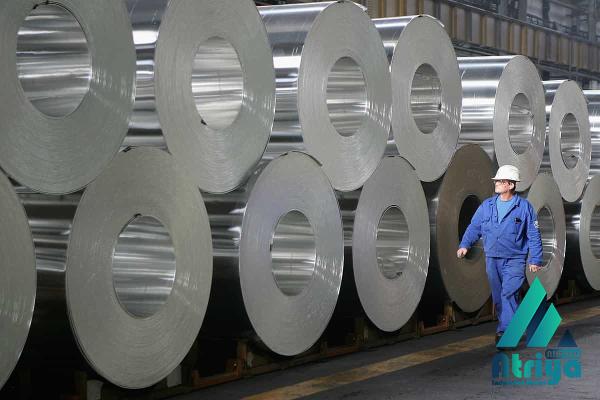The London Metal Exchange (LME) Steel Billet contract is a widely recognized benchmark for the global steel industry, providing a transparent pricing mechanism for steel billet producers, consumers, and traders. This summary aims to provide an overview of LME steel billet, its market outlook, and key considerations for those involved in the steel industry. 1. Understanding Steel Billet: Steel billets are semi-finished metal products that are typically rectangular or square in shape. They are a crucial input for the production of various steel products, including long products like rebars, wire rods, and structural sections. Steel billets are produced through a process of casting and solidifying liquid steel, typically in continuous casting machines. 2. LME Steel Billet Contract: The LME Steel Billet contract was launched in 2008 to provide market participants with a tool for hedging against price volatility and to establish a transparent benchmark for steel prices. The contract represents a physical delivery of 10 metric tons of steel billets of specified dimensions and chemical composition, with delivery points in Europe, Asia, and the Americas.
iron
 3. Market Outlook and Factors Influencing Prices: The market outlook for LME steel billet is influenced by several factors, including: a. Global Steel Demand: The demand for steel billet is closely tied to the overall demand for steel products, which is driven by industrialization, construction activity, infrastructure investments, and manufacturing. Economic growth and development in emerging markets, such as China and India, have a significant impact on steel demand. b. Raw Material Costs: The prices of raw materials used in steel production, such as iron ore, coking coal, and scrap metal, heavily influence the cost of manufacturing steel billets. Fluctuations in raw material prices can have a significant impact on the profitability of steelmaking operations and, consequently, the price of steel billet. c. Trade Policies and Tariffs: Trade policies and tariffs imposed by governments can affect the global steel market. Tariffs, restrictions, or quotas on steel imports can create supply and demand imbalances and impact the price of steel billet. d. Technological Advancements: Advances in steelmaking technology, such as energy-efficient processes, recycling techniques, and innovations in production methods, can influence the competitiveness and cost-efficiency of steel billet production. Adoption of new technologies can lead to changes in supply and demand dynamics. 4. Trading and Hedging: The LME Steel Billet contract enables market participants to efficiently manage their price risks through hedging. Hedging involves taking an equal and opposite position in the futures market to offset potential losses or gains in the physical market. This allows steel producers, consumers, and traders to mitigate the impact of price fluctuations on their businesses.
3. Market Outlook and Factors Influencing Prices: The market outlook for LME steel billet is influenced by several factors, including: a. Global Steel Demand: The demand for steel billet is closely tied to the overall demand for steel products, which is driven by industrialization, construction activity, infrastructure investments, and manufacturing. Economic growth and development in emerging markets, such as China and India, have a significant impact on steel demand. b. Raw Material Costs: The prices of raw materials used in steel production, such as iron ore, coking coal, and scrap metal, heavily influence the cost of manufacturing steel billets. Fluctuations in raw material prices can have a significant impact on the profitability of steelmaking operations and, consequently, the price of steel billet. c. Trade Policies and Tariffs: Trade policies and tariffs imposed by governments can affect the global steel market. Tariffs, restrictions, or quotas on steel imports can create supply and demand imbalances and impact the price of steel billet. d. Technological Advancements: Advances in steelmaking technology, such as energy-efficient processes, recycling techniques, and innovations in production methods, can influence the competitiveness and cost-efficiency of steel billet production. Adoption of new technologies can lead to changes in supply and demand dynamics. 4. Trading and Hedging: The LME Steel Billet contract enables market participants to efficiently manage their price risks through hedging. Hedging involves taking an equal and opposite position in the futures market to offset potential losses or gains in the physical market. This allows steel producers, consumers, and traders to mitigate the impact of price fluctuations on their businesses.
Specifications of iron
 5. Global Steel Industry and LME Steel Billet: The steel industry plays a vital role in global economic development, as steel is a key material used in various sectors, including construction, automotive, infrastructure, and manufacturing. The LME Steel Billet contract serves as a reliable pricing mechanism and risk management tool for participants across the steel supply chain, including producers, consumers, and traders. 6. Key Considerations for Participants: For market participants involved in the steel industry, it is essential to consider the following factors when trading or hedging LME Steel Billet: a. Market Fundamentals: Analyzing the supply-demand dynamics, inventory levels, and production capacity in the steel industry helps participants make informed decisions and anticipate market movements. b. Risk Management: Understanding and effectively managing price risk is crucial. Participants need to monitor and analyze various factors that influence steel prices, develop risk management strategies, and employ hedging techniques to protect against market volatility.
5. Global Steel Industry and LME Steel Billet: The steel industry plays a vital role in global economic development, as steel is a key material used in various sectors, including construction, automotive, infrastructure, and manufacturing. The LME Steel Billet contract serves as a reliable pricing mechanism and risk management tool for participants across the steel supply chain, including producers, consumers, and traders. 6. Key Considerations for Participants: For market participants involved in the steel industry, it is essential to consider the following factors when trading or hedging LME Steel Billet: a. Market Fundamentals: Analyzing the supply-demand dynamics, inventory levels, and production capacity in the steel industry helps participants make informed decisions and anticipate market movements. b. Risk Management: Understanding and effectively managing price risk is crucial. Participants need to monitor and analyze various factors that influence steel prices, develop risk management strategies, and employ hedging techniques to protect against market volatility.
buy iron
 c. Regulatory Environment: Staying informed about regulations, tariffs, and trade policies that impact the steel industry is vital, as these can affect market conditions and prices. d. Price Forecasting: Utilizing analytical tools and market insights to forecast future steel billet prices allows participants to make informed decisions regarding trading, purchasing, or production plans. e. Global Economic Trends: Considering broader economic trends, such as GDP growth, infrastructure spending, and industrial development, provides context to evaluate steel demand, potential market risks, and opportunities. Conclusion: The LME Steel Billet contract is an important tool for managing price risk and establishing transparent pricing benchmarks in the global steel industry. Understanding the market outlook, factors influencing prices, and key considerations are crucial for participants involved in steel billet trading, production, and consumption. By staying informed and employing risk-management strategies, market participants can navigate the dynamic steel market with more confidence.
c. Regulatory Environment: Staying informed about regulations, tariffs, and trade policies that impact the steel industry is vital, as these can affect market conditions and prices. d. Price Forecasting: Utilizing analytical tools and market insights to forecast future steel billet prices allows participants to make informed decisions regarding trading, purchasing, or production plans. e. Global Economic Trends: Considering broader economic trends, such as GDP growth, infrastructure spending, and industrial development, provides context to evaluate steel demand, potential market risks, and opportunities. Conclusion: The LME Steel Billet contract is an important tool for managing price risk and establishing transparent pricing benchmarks in the global steel industry. Understanding the market outlook, factors influencing prices, and key considerations are crucial for participants involved in steel billet trading, production, and consumption. By staying informed and employing risk-management strategies, market participants can navigate the dynamic steel market with more confidence.











Your comment submitted.